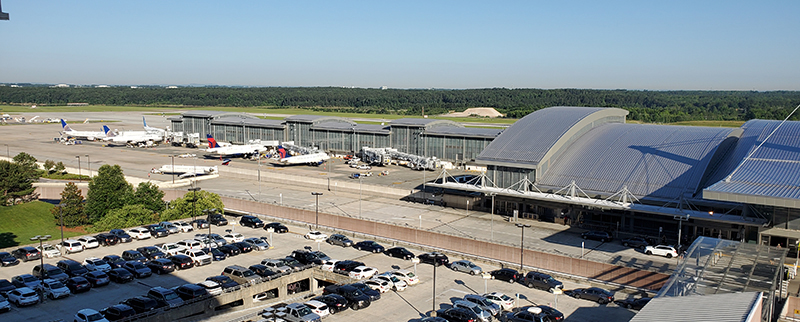As Raleigh-Durham International Airport (RDU) prepares to replace its primary Runway, 5L/23R, the Federal Aviation Administration (FAA) has determined the new runway can be built at 10,639 feet – longer than the current 10,000 feet runway.

“Adding more than 600 feet of takeoff distance to RDU’s future runway will allow existing airlines to carry more passengers and cargo,” said Michael Landguth, president and CEO of the Raleigh-Durham Airport Authority. “It will also provide greater economic opportunities for Triangle-area businesses and communities.”
The FAA cited information provided by Alaska Airlines in making its decision. Working collaboratively with Alaska Airlines, Authority staff were able to justify the need for additional runway length to accommodate takeoff and landing for Alaska’s fleet of Boeing 737-900 aircraft, allowing them to carry more passengers, cargo and fuel to destinations on the west coast. The additional runway length will also assure adherence to current FAA safety and design standards.
The project has the support of North Carolina’s two U.S. senators, along with other federal, state and local elected officials.
“For more than 80 years, RDU International Airport has served North Carolinians across the state and played a critical role in the development of the Research Triangle Park,” said Sen. Richard Burr. “However, over time, the airport’s primary runway has experienced increased pavement deterioration. The FAA’s recent runway length approval is a critical step to replace this aging runway. I applaud the dedicated work of the Raleigh-Durham Airport Authority to ensure the runway replacement will adequately serve passenger and cargo operations for years to come.”
“RDU is long-overdue to replace its existing runway, and I was proud to work with the Airport Authority, Senator Burr, and Secretary Buttigieg to elevate the urgency of the project,” said Sen. Thom Tillis. “I am very pleased the FAA has approved RDU’s runway length proposal, which will be instrumental in supporting regional commerce and ensuring RDU remains a world-class airport.”
Business and community groups led by the Regional Transportation Alliance, the Research Triangle Foundation and the Triangle J Council of Governments also engaged in a letter writing campaign in support of the runway replacement.
Although still safe for continued operations, Runway 5L/23R is nearly four decades old and needs to be replaced. RDU has been replacing large slabs of concrete for several years as part of a runway preservation project.


